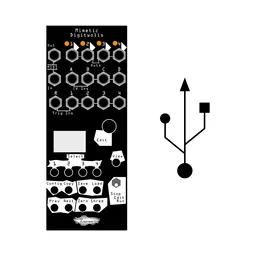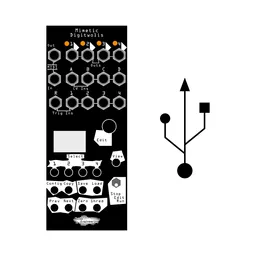We love percussion.
If you’re familiar with Noise Engineering products, you’ve probably heard of a module called the Basimilus Iteritas Alter: it’s a Eurorack staple, if you ask us, and has remained one of our most popular products ever. We’ve always wanted to release a compact percussion voice to complement the BIA, but we never had quite the right platform to house it… until we made the Legio platform.
Say hello to Tymp Legio, a compact yet impactful percussion voice in just 6 HP! Tymp Legio is shipping NOW, and you can order it at our webstore or at your favorite retailer, along with Polydactyl Versio – read about PV in last week’s article. And, of course, both the Tymp and Polydactyl firmwares are available completely free to platform owners via our Customer Portal. 
A full percussive voice on the Legio platform
When we first came up with the concept for Tymp Legio, we had a whole lot of ideas on the table (see above regarding our love for percussion). After quite a bit of testing we narrowed down the exact features that we wanted: a few of our favorite drum sounds packaged in a way that was easy to navigate, tweak, and further modify with CV.
You may notice that the labels on TL aren’t the most serious descriptors in the world. Originally, things were labeled with names like “Timbre” and “Duck,” but as development on TL continued we realized that a fun and slightly ridiculous theme suited the module better. Since it has a fun and inviting sound with an easy-to-use interface, we wanted the panel to reflect that. Plus, where else are you going to find a Wackitude parameter?
TL has three modes: Boing, Cat, and Boot. Each mode works well across a large range of frequencies and applications, but they were developed with particular types of sounds in mind. Boot excels at kicks and low end. Cat shines with snares and rototoms. And boing covers anything metallic and noisy, with some lasers and bells thrown in for good measure.
Once you’ve selected a mode, the right switch changes the variation of that mode, and then its timbre can be manipulated with the Pitch, Decay, and Wackitude controls. TL tracks 1v/8va, meaning you can play a bassline with your kicks, tune your snares to fit your track, use some bells as your melody. Wackitude and Decay can also be CV controlled, so it’s easy to create variety and accents with external modulators!
Duck around and find out
Not only is Tymp Legio a percussion voice, it can help you mix your patch, too. External audio can be patched to the Quack inputs, where they’ll be ducked (get it?) whenever TL is triggered in Boot or Cat mode. This is handy if you want to keep your bassline out of the way of your kick drum, for instance, or you just want to add some movement to a dance patch.
This also means that you can mix multiple TL’s (and an external voice from another module, too) without any extra modules. As you’ll see in the video below, a full drum kit made of 3 TL’s can be chained together eliminating the need for a separate mixer, which saves space in a compact system.
The history of Tymp Legio
We’ve had the concept of a small percussion voice in our minds for a long time. We even prototyped one in 2017. That prototype never made it to the top of the to-do list, though, and it was implicitly shelved for a while. From time to time, someone would mention it and we’d get excited about it…only to get distracted again by the things we were in the midst of.
When Legio was released this year, we realized it would be a great platform for a percussion voice. The NE team has more than tripled in size since that first proto in 2017, so ideas are abundant and internal testing always leads to lively discussion.
We decided to take a different approach to the development of Tymp: normally, Stephen writes firmware and makes adjustments based on feedback from the team. This time, Stephen gave the team a set of tools to work with and the rest of us designed the modes and parameter behavior.
I (Markus) spearheaded a lot of the technical side since working with user-unfriendly synthesis development tools is my idea of a good time. I mainly helped the rest of the team work out exactly how the different sounds should behave and sound: there were days when six different versions of the firmware would go back and forth in the company slack, with each member of the team giving feedback and suggesting tweaks, but eventually we got to a point where everyone was patching up sounds that worked for their style and forgetting to critique things. When a group of people as critical as we can be can’t find anything to complain about? That’s when we knew we had a winner.
When you patch up your Tymp, you’ll hear the power of teamwork. And also earth-shaking bass drums.
What’s the difference between Basimilus Iteritas Alter and Tymp Legio?
We’ll be doing a full comparison post in coming weeks, but the nutshell version is that the BIA and TL were designed to complement each other. Each excels at things the other can’t do. In my system, BIA and TL are patched up next to each other and they cover most of my drum needs with a little bit of sequencing. More on that in a later post.
Order yours today
Tymp Legio starts is shipping now Head to our webshop or your favorite retailer to order yours today and get some awesome drums in your rack ASAP! If you already own a Legio, you can try out the Tymp firmware at the Customer Portal, too.






